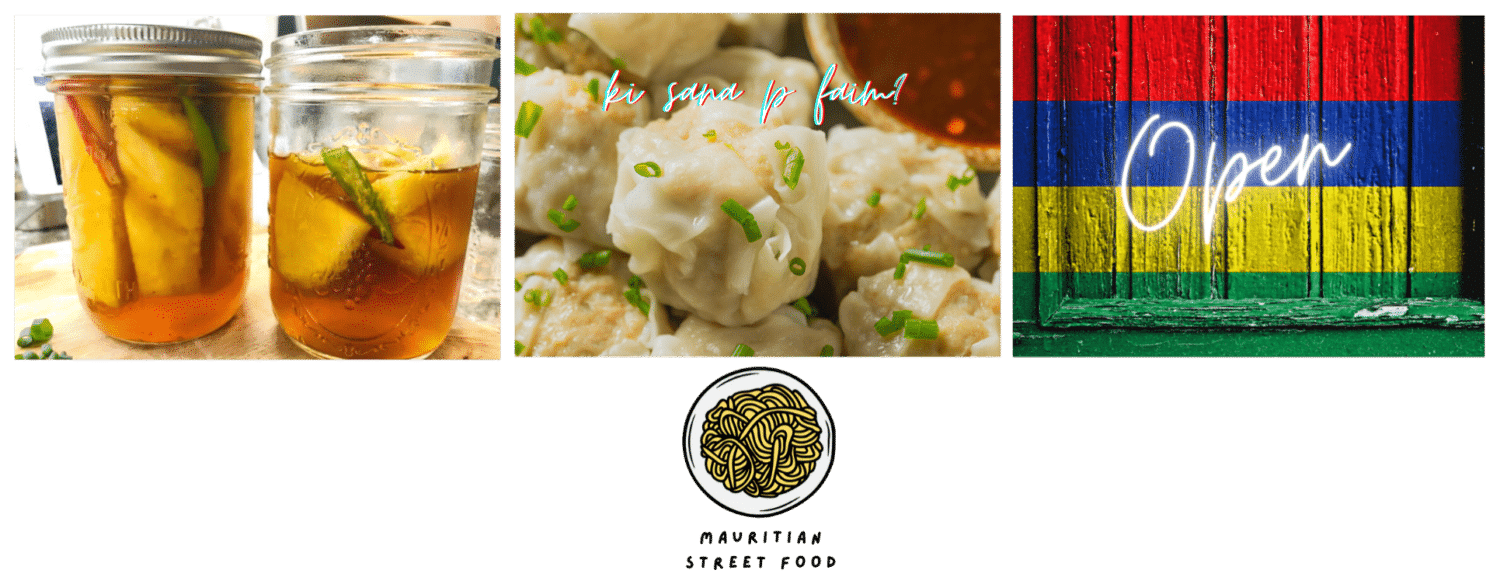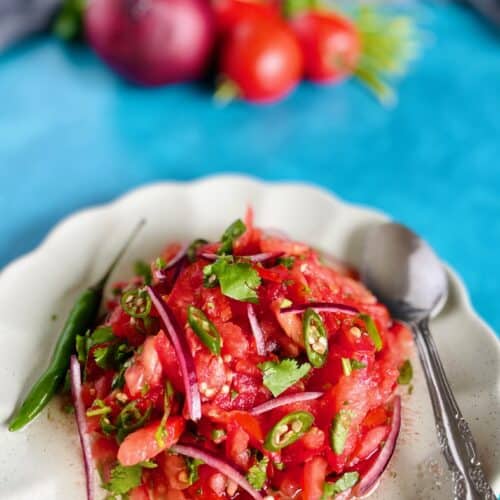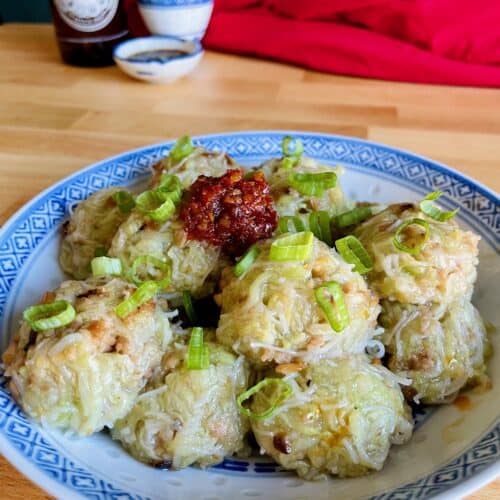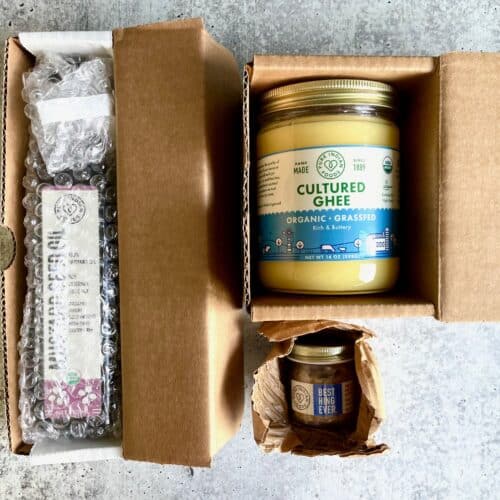Mauritian Cuisine
Mauritian cuisine has, like many other colonized countries, been influenced by the diverse peoples that were once passing through or have made Mauritius their permanent home. So it’s a rich amalgamation of Indian, Créole, Chinese and French cuisine with a distinct Mauritian style that you cannot find anywhere else.
Here is a list of ingredients with a mini description and some history. This is not a comprehensive list, but merely a list of ingredients t need some extra explanation for one reason or another. Usually the reason is that the ingredient is either not as commonly used worldwide or Mauritians use a different variety worth mentioning otherwise your recipe might not taste its best.
Check out our latest:
Chilies (pima)
Most people won’t consider chilies a crucial component in cooking. In fact, a lot of recipes on the internet and in cookbooks write “(optional)” next to chilies or cayenne powder. To me, it’s an ingredient that if omitted, just doesn’t feel quite right. That’s probably because I have a big love of chilies and almost anything spicy! You can omit chilies from your recipes if you prefer.
There are several types of chilies used in our cuisine. The most commonly used one is probably the bird’s eye chilies (also known as Thai chilies) and that is the one I use the most often. We use both the green and the red ones. They can easily be found in most countries and all across the States but if somehow you can’t find them at your regular grocery store, you can always find them at Chinese, Indian (I’ve only seen the green ones at Indian markets in USA) and any other Asian markets.
We also use the long green chilies quite a lot. I believe it’s an Indian variety. I cannot easily find them in the States so I simply use green bird’s eye chilies and I don’t miss them. If you love chilies, be sure to check my Green Chili Achard recipe.
Cilantro leaves (cotomili)
Cilantro is an essential ingredient in almost all Mauritian dishes. Make sure you have plenty on hand. If you are not partial to cilantro, you can skip it, and depending on the dish you can even replace it with spring onion or parsley.
Garlic (l’ail)
Garlic is the base of most of Mauritian dishes.
Onion (zoignon)
Onion is another star in our cuisine as well. The type of onion you use will depend on the meals you’re making but we primarily use shallots and red onion. Red onion is normally deep-fried and used as a garnish or as an ingredient in briani (biryani).
Thyme (du thym)
We use a copious amount of thyme in our Créole dishes like rougaille and bouillon (broth-based soups). This is the French influence.
Tomatoes (pomme d’amour)
Tomatoes are well-loved in Mauritian dishes! The most common ones are Roma-style tomatoes and these are the ones I use in my recipes unless mentioned otherwise. They’re the main ingredients in dishes like rougaille and spicy satini (crushed tomato-based salsa) and a base ingredient in a number of others.
Indian (70% of the population)
The population of Mauritius is primarily Indian so it’s no wonder that its cuisine dominates the culinary scene. Indian immigrants arrived in the 19th century via the Immigration Depot in Port-Louis to work as indentured laborers in the sugarcane plantations after slavery was abolished in 1835. The Immigration Depot, also known as Aapravasi Ghat, was declared a World Heritage Site by UNESCO in 2006. While some of some of them returned to their homes in India at the end of their contract, the majority of them chose to make Mauritius their new home.
Essential Indian Ingredients
Cardamom pods – green (élaiti)
This is one of my ultimate favorite spices, especially in Indian desserts. You can purchase the pods or the seeds, although as with pretty much all Indian spices, it’s better to purchase them in their whole form to ensure freshness and the best fragrance but that’s especially true for cardamom. They are widely used in both savory and sweet dishes. Some recipes, like briani (biryani), call for the whole pods while others just use the seeds inside the them.
Curry leaves (cari poulet)
This is an indispensable part of our Indian savory dishes. In fact, none of my Mauritian Indian meals felt right until I managed to source some curry leaves for them. In the West, people commonly mistake it as the herb that is ground into curry powder. It is not. Curry leaves are an herb with a unique aromatic fragrance and there’s no substitute for it.
In Mauritius, most Indo-Mauritian families have a curry leaf tree in their yard and the trees often grow well over 6 feet tall. This herb is readily available on our island but if you’re overseas, you won’t find it in a regular grocery store. You’ll need to locate an Indian grocery store. It’s very easy to grow so I keep a plant in a pot on my tiny balcony. I don’t have a lot of space in my garden so I have to be very selective in what I choose grow. There was no question that a curry plant should be the top priority when I first moved here.
Tip: Use fresh curry leaves whenever possible because they lose almost all their beautiful aroma in their dry form. However, you can freeze fresh curry leaves. This preserves their aroma and you can just grab a few as needed.
Check out my Mauritian Curry Powder and my Achard Masala Paste recipes. They both contain curry leaves.
Fenugreek (methi)
We use both the seeds and the leaves in various dishes and I love to add it in my vindaye recipe. The seeds are a touch bitter and are often roasted to reduce some of the bitterness before adding it to a recipe. It’s sometimes the secret ingredient in a recipe.
Curry powder (la poudre cari)
There are so many different variations of curry powder around the world but the main ingredients usually are coriander, cumin, turmeric and chilies. Our Mauritian curry powder is a little different from the rest and has a distinctly different taste. Ours uses a bit more coriander and we also add curry leaves. It’s totally worth making your own for a traditional Mauritian taste.
Mustard Seeds – Black (la grain moutarde noire)
This is a very important ingredient in all Indian dishes but especially in our beloved vindaye and achar. They are often used whole after being briefly tossed in oil. I prefer to use them lightly crushed or coarsely ground. Make sure to not burn them otherwise they will become quite bitter. Black mustard seeds are the most pungent, you may replace it with the brown variety for a less strong flavor.
Chinese (3% of the population)
Although the Chinese constitute a very small minority of the population, Chinese cuisine saturates the gastronomical scene just as much as Indian cuisine. In fact, if you visit Mauritius, you’ll see a lot of small eateries, often a hole-in-the-wall, owned and operated by Indo-Mauritians or Mauritian-Créoles cooking and selling Chinese food.
The first wave of Chinese were Cantonese-speakers who came in the late 1700s from Guangzhou. They found work primarily as blacksmiths, cobblers, and tailors. The second wave of Chinese were Hakka-speakers and came in the mid 1800s from about the same region but further East. Roughly a decade later, grocery shops nicknamed la boutik sinois run by Chinese, could be found throughout the island. Their house would be attached to the shop.
Both sets of grandparents ran shops on different parts of the island. This is where my parents grew up and so did I for the first part of my life!
Essential Chinese Ingredients
Fermented Red Yeast Rice
Fermented red yeast rice is not a common or an essential Chinese ingredient outside the Hakka community in Mauritius. I am still including it here because I consider it essential if you want to prepare authentic home-made Hakka dishes.
It is made by fermenting red yeast rice and glutinous rice with yeast cake for a few days. It imparts a tart and umami flavor to Chinese dishes that can only be tasted and not described. Fermented red yeast rice is often used in Traditional Chinese Medicine and even in the West, like America, for its cholesterol-lowering qualities.
Fish Sauce
Fish sauce is almost as important as soy sauce in Chinese cuisine. It’s made by fermenting fish, usually anchovies or krill, for a couple of years. It’s an umami bomb and should be used sparingly for a little goes a long way. Please find a brand that doesn’t have any additive if possible.
Garlic Chive
These grass-like herbs impart a subtle garlic and chive flavor to many dishes. We use a copious amount in our fried noodles. You probably won’t find it outside of an Asian store. Although you can substitute spring onion or chives for garlic chives in a recipe, to me, it doesn’t taste the same. I consider it essential to use garlic chive in a recipe that calls for it to get the true Mauritian flavor.
Soy Sauce
It’s used in almost all of our Chinese dishes and there wouldn’t be any fried noodles without it. We use both light and dark soy sauce. Light soy sauce is thinner, lighter and saltier and dark soy sauce is darker, thicker and less salty and used often to impart color as well as flavor.
If you are sensitive to gluten, you might want to use a gluten-free tamari instead because traditional Chinese soy sauce contains wheat. Tamari is a soy sauce of Japanese origin and contains little to no wheat.
LEARN MORE
Hop over to my Mauritian ingredients translation list that covers English, French, Créole, Hindi and even some Hakka. Equally informative is the Mauritian ingredients glossary.
SHARING IS CARING!
If you like this website, please share it with your family and friends. I am also on Facebook, please follow my recipe updates there. Last but not least, if you made any of my recipes, please consider leaving a review for it and leaving a comment. Thank you.





